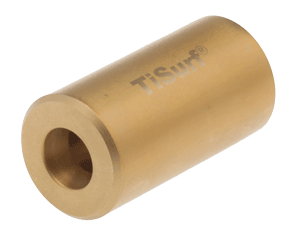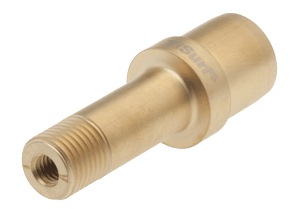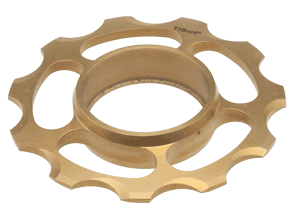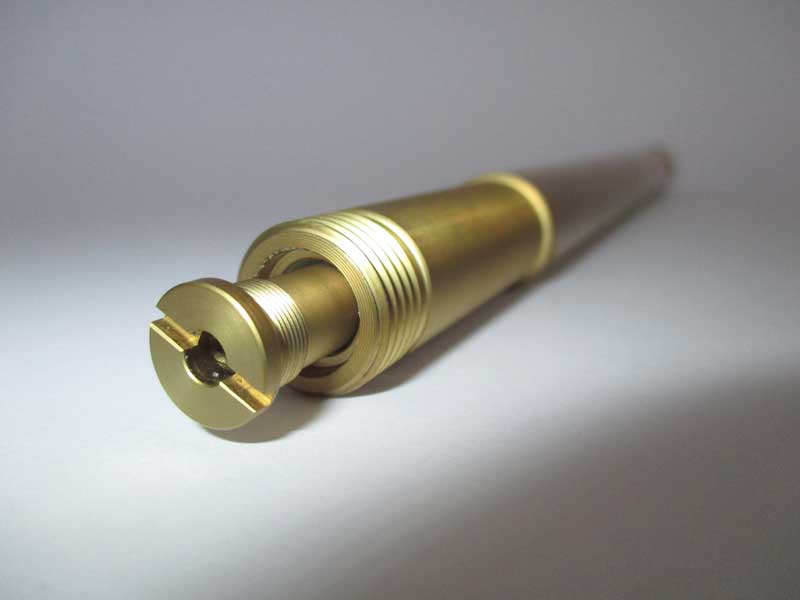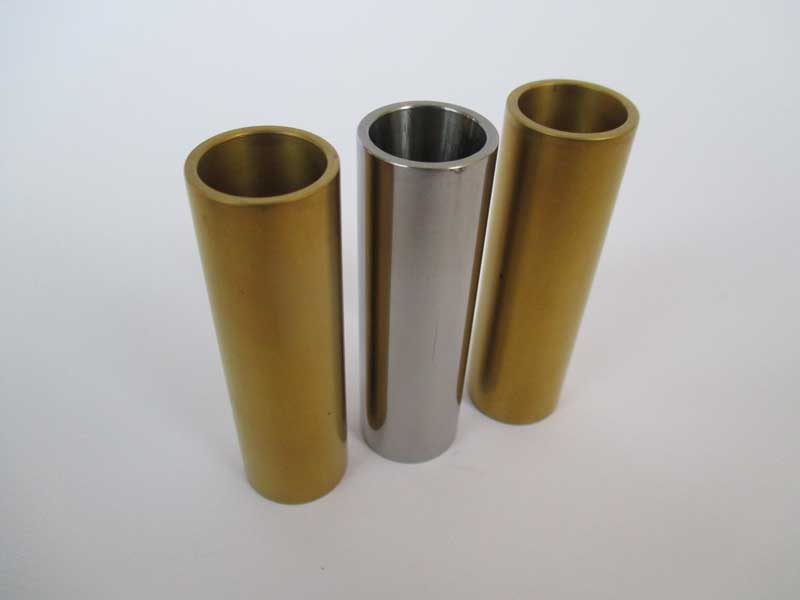Specifications
|
TiSurf Titanium Gr1 |
TiSurf Titanium Gr2 |
TiSurf Titanium Gr5 |
TiSurf Titanium Gr9 |
| Color TiN |
Gold |
Gold |
Gold |
Gold |
| Weight Ti, g/cm3 |
4.51 |
4.51 |
4.42 |
4.51 |
| Elastic Modulus Ti, GPa |
105 - 120 |
105 - 120 |
107 - 122 |
100 - 103 |
| Coefficient of Thermal Expansion Ti, m m-1 °C-1 |
9.5 x 10-6 |
9.5 x 10-6 |
9.4 x 10-6 |
9.4 x 10-6 |
| Proof strength Ti, Rp0.2 MPa min |
220 |
275 - 450 |
825 - 910 |
483 |
| Tensile strength Ti, Rm MPa min |
345 |
345 |
895 |
620 |
| Elongation Ti, A % min |
35 |
2 |
10 |
15 |
| Hardness TiN outermost layer, HV |
2 900 - 3 100 |
2 900 - 3 100 |
2 900 - 3 100 |
2 900 - 3 100 |
| Hardness Ti2N second layer, HV |
1 200 - 1 500 |
1 200 - 1 500 |
1 200 - 1 500 |
1 200 - 1 500 |
| Hardness Ti, HV |
115 |
220 |
330 |
250 - 280 |
| Melting point Ti, °C |
1 670 |
1 665 |
1 604 - 1 660 |
1 700 |
| Thermal conductivity Ti, W/m-K |
16 |
16.4 |
6.7 |
8.3 |
| Friction TiN against steel, dry, μ |
0.5 |
0.5 |
0.5 |
0.5 |
| Friction TiN against TiN, dry, μ |
0.4 |
0.4 |
0.4 |
0.4 |
The data and other information contained herein are derived from a variety of sources which SentinaBay AB believes are reliable. Because it is not possible to anticipate specific uses and operating conditions, such as titanium quality and titanium parts construction, SentinaBay AB urges you to consult with our technical service personnel on your particular applications.
Sources: http://www.haraldpihl.se/attachments/226_titan.pdf, http://smt.sandvik.com/se/produkter/tube-pipe-fittings-and-flanges/tubular-products/titanium-tubes/#tab-mechanical-properties, https://sv.wikipedia.org/wiki/Titan, https://en.wikipedia.org/wiki/Titanium, http://asm.matweb.com/search/SpecificMaterial.asp?bassnum=MTU010, http://asm.matweb.com/search/SpecificMaterial.asp?bassnum=MTA321, http://www.matweb.com/search/datasheet.aspx?matguid=c27e9d21a20a4d2fb2332abba2379c7a&n
=1&ckck=1, http://www.tct.it/assets/titanium-ti3al2.5v-gr-9---alpha-annealed.pdf, http://www.titaniuminfogroup.co.uk/userfiles/files/PDFs/data-sheet-1.pdf, http://www.timet.com/datasheets-and-literature, Materials Properties Handbook: Titanium Alloys, R. Boyer, G. Welsch, and E. W. Collings, eds. ASM International, Materials Park, OH, 1994, Structural Alloys Handbook, 1996 edition, John M. (Tim) Holt, Technical Ed; C. Y. Ho, Ed., CINDAS/Purdue University, West Lafayette, IN, 1996.
